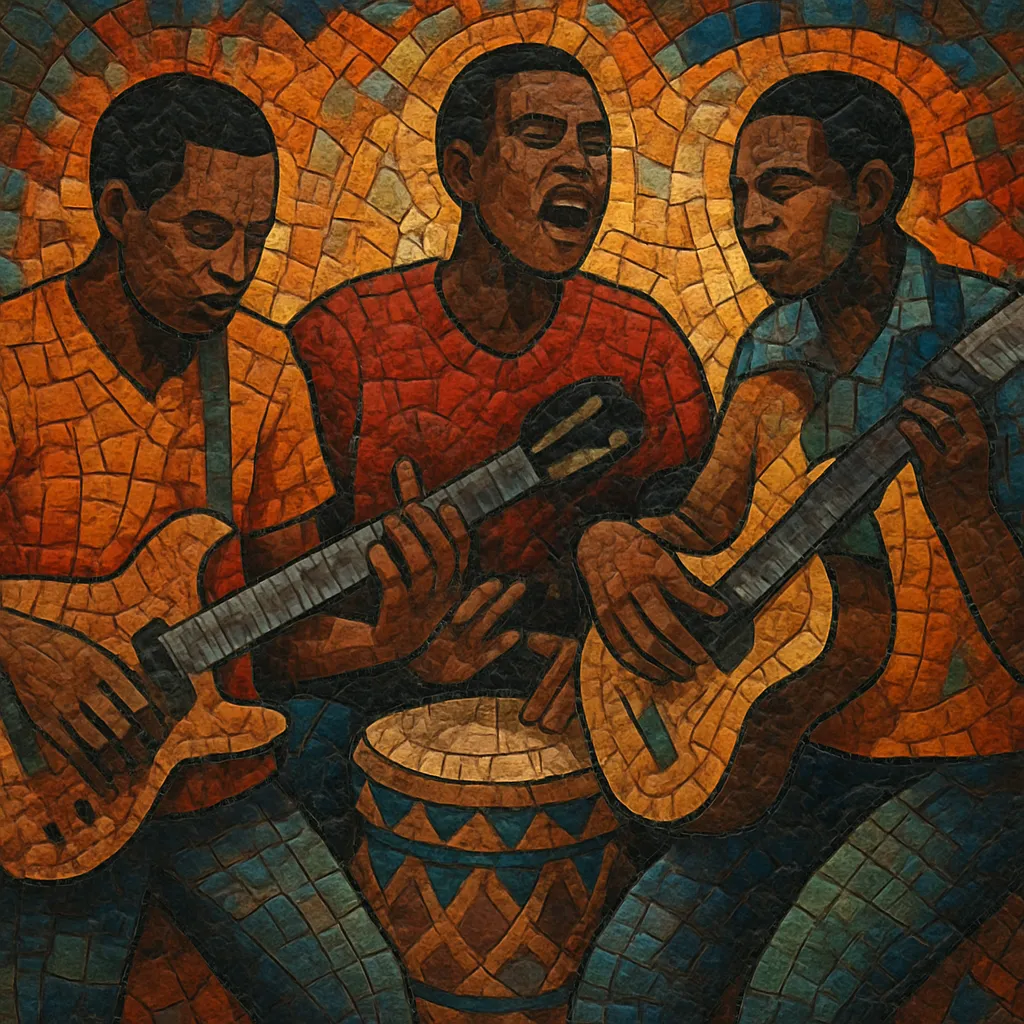Jit (also spelled jiti) is a fast-paced Zimbabwean guitar-dance music that crystallized in urban centers like Harare in the 1980s. It blends bright, interlocking electric-guitar lines with propulsive drum-kit rhythms, hand percussion, and call-and-response vocals, often in Shona.
The style favors cyclical, uplifting vamps, crisp clean-tone guitars that emulate mbira patterns, and upbeat, party-ready grooves. While closely related to other Zimbabwean guitar styles, jit is typically quicker and more driving, with concise songs designed for social dancing and celebration.
Jit emerged in late-1970s/early-1980s Zimbabwe as urban bands adapted traditional Shona rhythmic sensibilities and mbira-inspired melodies to modern band setups. Musicians drew on Congolese rumba/soukous guitar techniques (bright, intertwined lines), South African mbaqanga’s township dance feel, Kenyan benga’s brisk guitar-led drive, and Zimbabwe’s own chimurenga’s mbira-derived melodic logic.
By the mid-1980s, jit had become a signature urban dance sound. Groups refined a high-tempo four-on-the-floor feel with tight snare cross-stick patterns, shaker/hosho textures, and layered guitars that mirrored thumb-piano figures. Lyrics—often in Shona—mix romance, everyday stories, and social commentary, delivered with catchy refrains and vocal interlocks designed for crowd participation.
Acts such as the Bhundu Boys carried the jit sound beyond Zimbabwe, touring internationally and introducing global audiences to its energetic guitar shimmer and joyful momentum. UK and European indie and world-music circuits took note, helping cement jit’s reputation as one of Southern Africa’s most effervescent dance musics of the era.
Jit has continued to coexist and overlap with related Zimbabwean guitar styles, influencing and being influenced by sungura and modern Zimbabwean pop. Its crisp, interlocking-guitar vocabulary and party-forward groove have also colored the broader worldbeat landscape, inspiring bands and producers who seek bright, danceable, guitar-centric African pop aesthetics.


